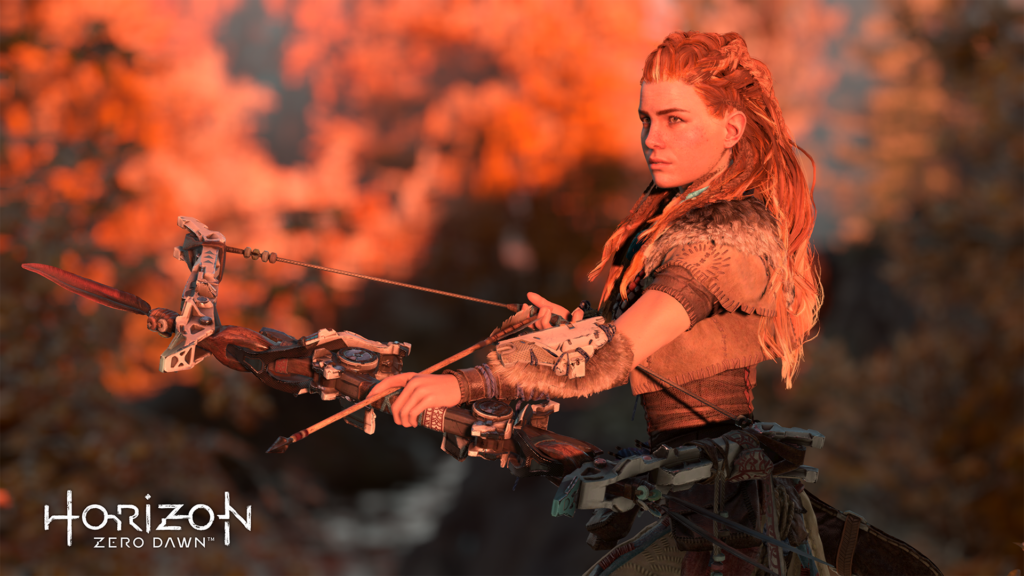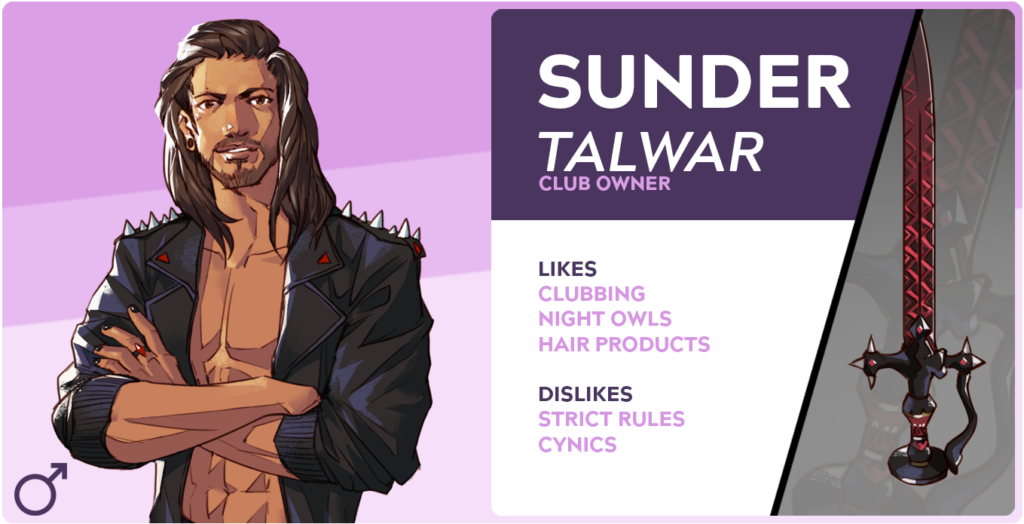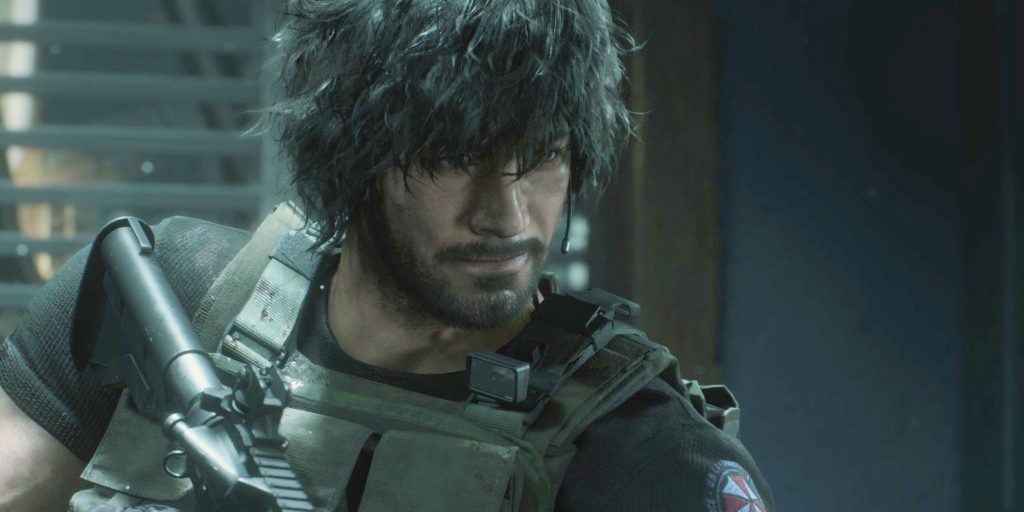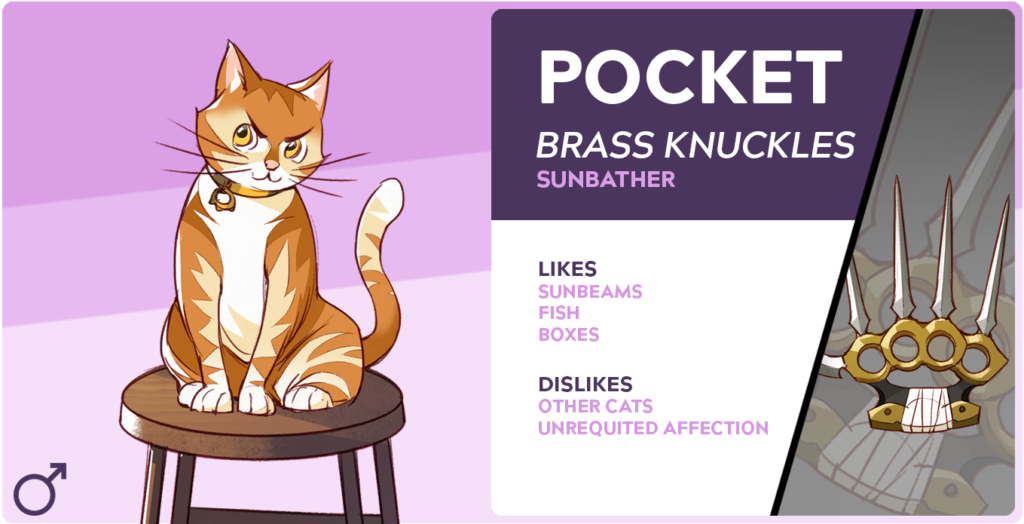
Where Are All the Video Game Boyfriends?
I’d recently been playing Alan Wake for the first time, a game brimming with fascinating ideas, but underneath all that, the plot can essentially be boiled down to one thing: a man trying to rescue his wife. We’ve all seen this damsel trope played out ad nauseam, and even if we strive for a more equal dynamic wherein a woman is the male protagonist’s savior, there’s almost certainly a romantic dynamic that exists – think Elena in the Uncharted series.
Love is a universal theme, so it shouldn’t be a surprise that games include it to make a story more meaningful, but a lot of times it can feel shoehorned in, and only serves to reinforce heteronormative values.
What’s more, in these cases it’s usually the male doing the romancing. David Gaider, former Bioware game writer, sums up this approach: “First, it confirms the male protagonist is straight, and second [by saving or conquering the woman], it shows how virile he is.”
As we see more women headlining AAA games, it’s interesting to note the majority of these protagonists are not defined by their sexuality or a significant other. When asked about this at an E3 interview in 2017, Guerilla Games’ Herman Hulst (now head of Sony Worldwide Studio) replied “Aloy is very driven … a woman on a mission. She really was not gonna waste her time.” The host then backed this up, saying people liked Aloy because she was “fiercely independent.”
Does having a “strong, independent female protagonist” mean she’s suddenly without the desires that Nathan Drake, Geralt of Rivia or countless other leading men have? Granted, a lot of sexual content is gratuitous and unnecessary, but no one’s ever going to tell Geralt, “my dude, don’t you have more important things to do than getting your rocks off?”
What’s more likely is that developers rarely take consideration of what a woman’s desires are, especially when these teams are so often homogenous – that is, white, male and straight.
“Even if they like the idea of having a woman as the lead, writing a guy romance is a weird kind of mental gymnastics,” said Gaider, who has written male romances for the Dragon Age series- though of course those games also feature multiple romantic options of different genders and sexualities, and are not exactly comparable to an authored narrative with a fixed female protagonist.
“We’re kind of forging new ground in terms of very ingrained archetypes, of even having female protagonists,” Gaider continued. “So I think a lot of people are looking immediately to these strong female tropes where she embraces all the masculine traits.”
It is the emphasis of masculine traits – traits such as strength and violence – that permit developers to create games featuring a female perspective. Exploring romance could easily be deemed too feminine, and put games at risk of being dismissed by a male-centric mainstream who coined pejorative terms like ‘chick flick’ and chick lit.’
The very lack of boyfriend characters in games is precisely what prompted Kitfox Games’ Tanya X. Short to make Boyfriend Dungeon, a dungeon-crawler RPG visual novel hybrid in which your weapons are also companions you can flirt with and take on dates.
“I think the audience for boyfriends is enormous and just as mainstream as the audience for girlfriends,” Short said. “When I was growing up as a teenager, I felt like I was ignored by a lot of games. The fact is there are certain things in our culture that are considered more important than others.”
That doesn’t mean that video games are lacking in hot men. The Final Fantasy series is filled with them, from XV’s boy band party to the current-gen glow-up for the cast of VII Remake– Biggs especially proving to be quite a hit, if Short’s Twitter feed is any indication. Just in the past year, I’ve seen fandoms drooling over Claude in Fire Emblem: Three Houses and one streamer physically swooning as Devil May Cry’s V quips, “Don’t worry, I’ll be gentle.”
However, the difference is that most of these men are the protagonist, so if you’re attracted to men, you’re meant to be identifying with them rather than viewing them as an object of desire. And if you’re a straight guy playing someone everyone’s thirsty for? Well, that just fulfills another male power fantasy.
It’s a challenge to envisage a romanceable male who just adopts the same tropes female characters have been shackled with for years- to subvert them into say a ‘dude in distress’. Because while it’s considered a power fantasy for men to be able to save or protect women, it’s not something you hear about the other way round.
That doesn’t mean women don’t find vulnerability in men attractive- quite the opposite in fact. However, that’s more to do with emotional vulnerability, which doesn’t exactly translate in action-oriented, combat-driven games.
“I think there is a trope of women being protective of men, and you see stories about nurturing or stories about helping someone grow,” said Short. “We just don’t have as many game mechanics and interactions based around these kinds of feelings yet.”
Instead, where there have been instances of there being a potential male romance, you’re more likely able to relate with the man as the game also lets you play as him. Think of Lara Croft’s one-time potential beau Kurtis Trent in Tomb Raider: The Angel of Darkness, who became the first playable character other than Croft in the series.
The Resident Evil 3 remake is an interesting recent example, as Carlos has been given a more substantial playable role where he’s actively saving Jill after she’s infected by Nemesis. It’s no coincidence he’s not only had a buff, hairy makeover, but his relationship with Jill also has much more of a star-crossed tension from a rom-com. He works for Umbrella, she’s ex-STARS- will they or won’t they?
Essentially, these male romantic interests get to be heroic in a way that women don’t and are never expected to. I suppose you could argue that Zelda in Breath of the Wild awakens to her powers and saves Link’s life, but it soon reverts to the formula of Link having to rescue her. “As soon as you include something which isn’t along the lines of a trope, you get a portion of the audience who right away balk at that,” explained Gaider. “Let’s say a female hero saves the day and then the male love interest is just saved – it would demand justification.”
“I think you want to show the male character as being strong in his own right as well, and that matters more to us very intuitively,” said Short. “Even if we say that we want our female characters to also be strong, we still rescue them without really thinking twice a lot of times. And if you can’t have your male love interest get kidnapped or whatever, then it limits the kinds of interactions or ways that you can play with the old storytelling arcs of romance.”
The challenge is trying to create a male character who, Short said, is both “active enough to be attractive, but passive enough to be a love interest.” Boyfriend Dungeon gets around this because your romantic partners are not only very active through the flirty dialogue that makes up one side of the game, but the agency is all yours during dungeon-crawling sections. Technically, they’re accompanying you as your weapon- a phallic symbol in itself, but mechanically, they’re also passive objects.
When writing the straight female romances in Dragon Age, Gaider explained it wouldn’t do to simply flip genders. “For instance, it is considered acceptable that, in a straight relationship, the man is the initiator,” he explained. “But as a player character, that means that you would have a situation where the heroine is the one making the pass at the male character, and from a romance perspective, that always felt off for straight female players being put in the sort of masculine role.”
What Gaider thinks we’re still a long way from, at least in AAA titles, is seeing portrayals of gay male romances- this coming from an openly gay writer who’s written bi and gay romantic options in the Dragon Age series, including the series’ first ‘fully gay’ character, Dorian, in Dragon Age: Inquisition. But, being a Bioware game, you also have the luxury of choosing your romances and ignoring what doesn’t appeal.
“A game where the player would have no choice, like say you played Uncharted and the main character was a gay man – how confronting would that be?” he said. “It’s wrong to say all straight men feel threatened encountering gay male characters, but there certainly is a portion of them who respond vehemently.”
One such example is Dragon Age II, which contained both male and female bisexual characters. While the NPC Isabella was a popular romance option who received no complaints, Anders was a different story. “Anders making a pass at the male player was like, beyond the pale,” he said. “So we had to be really wary of that portion of the audience who’ll say ‘you’re shoving it down my throat’.”
In contrast, lesbian depictions are more tolerated if only because they’re often designed and fetishized for the straight male gaze, much to the frustration of queer women who so often find their representation isn’t written for them. The more authentic depiction of Ellie’s sexuality in The Last of Us Part II might be a sign of progress, but at the same time, if her romantic interest Dina is also a woman, isn’t that also more acceptable to straight men when identifying with a female protagonist?
“Maybe from a very cynical POV that’s why these types of representations are more favored, but I want to believe that’s not why,” said Leighton Gray, co-creator of Dream Daddy, a game all about dating cute dads as a gay or bi dad yourself. In terms of straight men being uncomfortable with gay content, she said found the opposite. “It was one of the more gratifying experiences to watch straight, male players initially get into it for the silly bit, or be uncomfortable at first, and through the progression of the game change their perspective on gay romance.”
It probably helps that the tone is silly to begin with, even if some feared the game could have just been a big joke at the expense of the gay community. Certainly, there has been criticism of its complete lack of social commentary on the realities of finding gay relationships or even explicitly referring to sexual identities. Ultimately, that light and jokey tone makes it a more comfortable entry point.
Short admits this was how Boyfriend Dungeon evolved over time, as the original had really been just a dungeon-crawling RPG where you could date a lot of boys (also, despite the title, your weapons include female and non-binary options, and a cat). “As I was talking to various people who I consider part of my demographic of Kitfox, I realized that if I just gave it a bit of a joke twist, following in the footsteps of Hatoful Boyfriend, then maybe some guys would feel comfortable playing it,” she explained. “Even if they just played it as a joke, maybe it would broaden their horizons.”
“I think for a lot of straight men, it just requires that exposure to these narratives to see that, hey, this is something I can understand because ultimately, what is a romance narrative but an emotional truth we can all relate to?” said Gray. “We’ve had a lot of men tell us that Dream Daddy helped them come to terms with their sexuality and that’s truly the greatest thing that could have possibly come out of this project.”
I realize it’s weird discussing the merits of queer or female-centric games in relation to how a hetero-male audience receives it – and hey, I’m also conscious that I’m a straight dude writing about this – but if a game can change the attitudes of the dominant audience, that can be a important step to see more diverse depictions in the mainstream that appeal to other tastes, whether that’s more romanceable men or a gay character headlining a AAA game.









